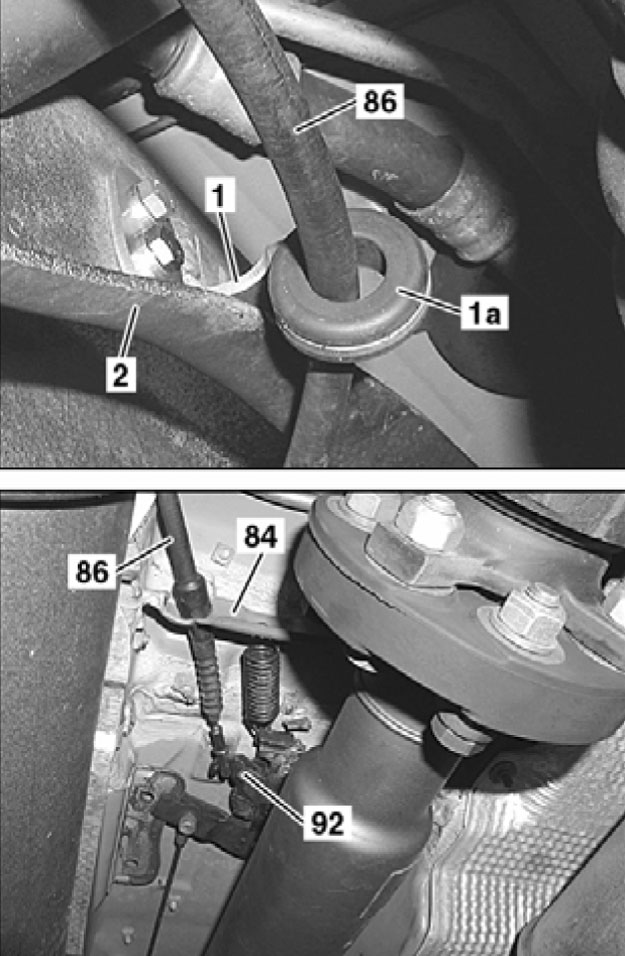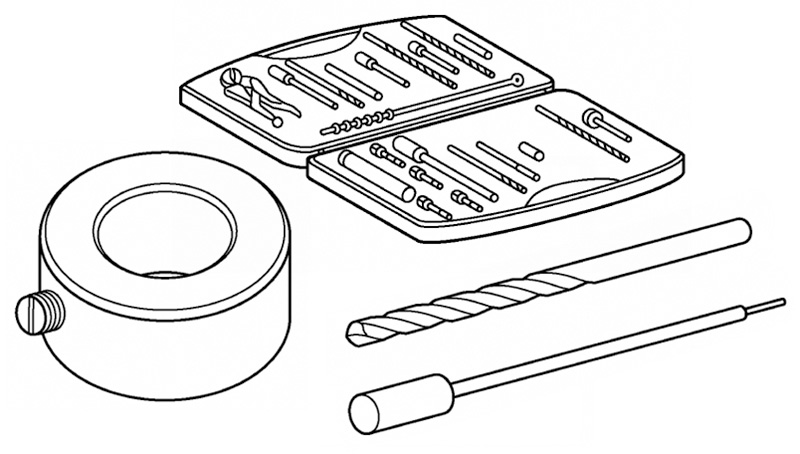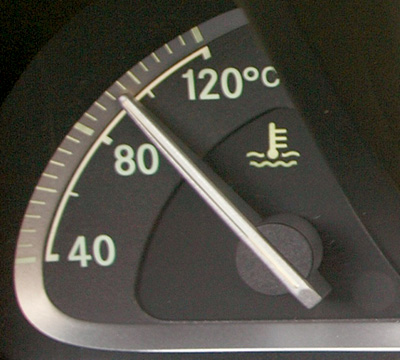These suggestions and solutions for technical problems come from service bulletins and other technical information published by Mercedes-Benz, selected and rewritten for independent repair shops.
Noises from Parking Brake Cable CL and S-Class, ’00 through ’04
 A complaint of a noise coming from the rear of the vehicle may be due to a broken parking brake cable bracket. The original brackets are welded to the rear axle carrier and may fail from normal vibration, allowing the cable to rattle against the carrier or the sub frame.
A complaint of a noise coming from the rear of the vehicle may be due to a broken parking brake cable bracket. The original brackets are welded to the rear axle carrier and may fail from normal vibration, allowing the cable to rattle against the carrier or the sub frame.
Replacement brackets bolt on. Use the following procedure:
- Pretension the parking brake’s automatic cable slack adjuster (92 in the illustration). Refer to WIS document AR42.20-P-0520-01A.
- Unhook the left and right parking brake cables (86) from the automatic cable slack adjusters and unclip them from the retaining plates (84) mounted on the undercarriage (Unclipping Tool W129 589 11 63 00 is available).
- Bolt on the new brackets (1), then install their rubber grommets (1a). You can make grommet installation easier by coating them with liquid lubricant (Naphtolen H, BR00.45-Z-1003-06A).
Note: Always replace both brackets even if only one is broken. Break off an unbroken bracket by bending it back and forth until the metal fatigues to failure, then file or grind down any sharp edges on the carrier. - Clip the left and right parking brake cables into the retaining plates and hook them back into the automatic cable slack adjuster.
- Slacken the automatic cable slack adjuster. Refer to WIS document AR42.20-P-0520-02A.
Note: On vehicles that do not have pre-drilled holes in the rear axle carrier (2) for the brackets, you’ll have to drill your own. Refer to WIS document AR42.20-P-2001-01I. - Check the version of the pedal assembly. Refer to WIS document BT42.20-P-0510-01A.
- Operate parking brake several times and check the pedal travel.
- If the pedal travel is not within specs, adjust the parking brake according to WIS document AR42.20-P-0540I.
 Repair Kit for Glow Plug Threads in Cylinder Head Diesel engines
Repair Kit for Glow Plug Threads in Cylinder Head Diesel engines
Save that expensive cylinder head! A repair kit is now available for damaged glow plug threads and/or broken off glow plugs. It makes it possible to accurately drill out the glow plug bore and install a threaded insert.
The repair kit can be ordered as a Special Tool (611 589 00 99 00), and costs $650. Also, the wear and tear components of the kit can be individually ordered as needed, along with additional replacement threaded inserts.
 Cracking Noises from the Soft Top Seals with Roof Closed CLK
Cracking Noises from the Soft Top Seals with Roof Closed CLK
This noise is probably caused by the sliding coating on the seals wearing at differing rates. If the coating is worn away, the seals can make cracking sound at the contact points while the vehicle is being driven.
It is not necessary to replace the seals to quiet things down. Instead, treat the areas shown in the illustrations with special sliding compound (A001 989 50 51) as follows:
- Clean the contact points on the seal on both sides.
- After cleaning, apply the special lubricant to the dry seal and allow it to soak in for approximately 20 minutes.
- Open and close roof several times.
- Remove any of the excess lubricant.
Sensotronic Brake Control (SBC) Bleeding Procedure
 SL and E-Class, all years
SL and E-Class, all years
The SBC brake hydraulic system must be bled with the menu-assisted STAR Diagnostics “Bleed Brake System†and “Inspect Brake System For Air†functions, or aftermarket equivalent, after the replacement or removal/installation of the following components: SBC hydraulic unit (A7/3), brake operating unit, suction line, pressure reservoir, brake lines or hoses, brake fluid reservoir, or brake calipers. Reference WIS documents AH42.10-P-0002-01T and AR42.10-P-0012R.
Further, when performing repair work on an SBC system, it is imperative that the brake system only be bled with Mercedes-Benz-approved bleeding equipment. The procedure requires that the unit must maintain a constant pressure of at least 2 bar, but not to exceed 3.5 bar. In conjunction with the approved brake bleeder, the electrohydraulic brake adapter (EHB) tool must also be utilized in order to ensure that the brake fluid receptacle bleeding hose is securely affixed to the brake caliper’s bleeder screw (reference WIS document AR42.10-P-0010-02R)
Approved Mercedes-Benz brake bleeders are available through the MBUSA Standard Service Equipment Program (SSEP): 1-888-458-4040.
Tire Pressure Monitoring System Implausible Fault Messages
SL500
 Implausible fault messages in the instrument cluster and/or implausible body electrical system function in Model 230.475 vehicles may be the result of a hardware fault in the tire pressure monitoring system control unit, which may impair CAN-B operation. This can cause malfunctions in the instrument cluster and display instruments (jumps in fuel level or temperature indicator, for example). Various warning and fault lamps may go on and off in cycles, or exterior lights switch on and off without obvious cause. Depending on the duration of the malfunction, fault codes (CAN communication disturbance) may be stored in various control modules linked to CAN-B, such as tire pressure monitoring, SAM, EIS, lower control panel, vehicle power supply control module, automatic air conditioning, instrument cluster, etc.
Implausible fault messages in the instrument cluster and/or implausible body electrical system function in Model 230.475 vehicles may be the result of a hardware fault in the tire pressure monitoring system control unit, which may impair CAN-B operation. This can cause malfunctions in the instrument cluster and display instruments (jumps in fuel level or temperature indicator, for example). Various warning and fault lamps may go on and off in cycles, or exterior lights switch on and off without obvious cause. Depending on the duration of the malfunction, fault codes (CAN communication disturbance) may be stored in various control modules linked to CAN-B, such as tire pressure monitoring, SAM, EIS, lower control panel, vehicle power supply control module, automatic air conditioning, instrument cluster, etc.
The solution is to replace the tire pressure monitoring control module (N88), Part Number 001 820 95 26.






0 Comments